precision interferometry with matter waves in zero gravity (PRIMUS)
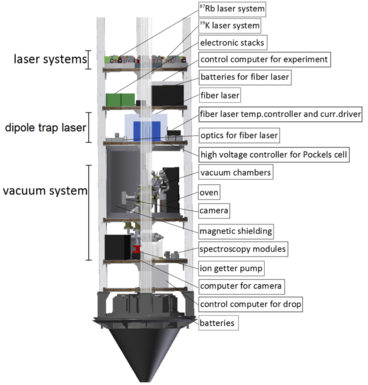
research area: fundamental physics
experiment title:
Precision interferometry with matter waves in zero gravity
experiment acronym: PRIMUS I / PRIMUS II / PRIMUS III
funding agency: DLR
grant number: 50WM0842 (2009 - 2011), 50WM1142 (2011 - 2016), 50WM1642
performing organization:
ZARM, Universität Bremen /
Institut für Quantenoptik (IQO), Leibniz Universität Hannover
prime investigator:
Dr. Sven Herrmann / Prof. Dr. Ernst M. Rasel
experiment objective
abstract
To guarantee free evolution of the matter waves freely falling atoms are required such as are available in atomic fountain setups. However in a typical earthbound atomic fountain the limited size of the apparatus restricts the time of free fall to few hundreds of miliseconds. Only in a space based experiment i.e. in a zero gravity environment largely extended free evolution times on the order of seconds will become available, which should ultimately allow for matter wave interferometric precision measurements of unprecedented precision. The PRIMUS experiment aims to evaluate this potential by using the drop tower compatible QUANTUS experiment as a test bed to perform atom interferometric measurements at extend free evoution times on the order of 1 second. The low level of resiudal vibrations that is provided in the drop tower (10-6 g, without additional measures of isolation) is another substantial benefit of the drop tower over other microgravity platforms (ISS, parabolic flights, sounding rockets). Obviously, the limited number of measurements (3 drops per day) imposes a limit on the ability to improve sensitivity by integrating over a large number of measurements. Thus PRIMUS is mostly a pathfinder experiment towards future space born measurements.
One of the major scientific incentives of PRIMUS is to prepare a test of the Universality of Free Fall, to be carried out by comparing the free fall of two species of atoms from a differential interferometric measurement. This will be done in collaboration with QUANTUS-II by preparing an ultra cold mixture of Rb and K atoms (QUANTUS-II) and by implementing two Mach Zehnder type matter wave interferometers to determine any residual differential acceleration. The drop tower experiments will allow to asses the potential sensitivity increase due to extended free evolution and the degree to which residual vibrations are supressed in the differential measurement. Ultimately this might pave the way for a space based measurement campaign that could achieve a sensitivity at the 10(-15) level comparable to the level of accuracy targeted by the MICROSCOPE mission, which uses macroscopic test masses.
Since the dual interferometer will operate with beam splitter lasers at different wavelengths of 780 nm and 767 nm it will be necessary to provide a phase link between the two laser systems, to obtain an accurate estimate of the differential phase. This will be achieved by means of a femtosecond frequency comb. To that end we have acquired a drop tower compatible frequency comb from Menlo Systems which we use to implement a phase link between our Raman lasers.
related publications
- Sven Herrmann, Ertan Göklü, Hauke Müntinga, Andreas Resch, Tim van Zoest, Hansjörg Dittus and Claus Lämmerzahl: Testing Fundamental Physics with Degenerate Quantum Gases in Microgravity. Microgravity Sci. Technol. 22, 529-538 (2010)
- S. Herrmann, H. Dittus, C. Lämmerzahl: Testing the equivalence principle with atomic interferometry, Class. Quantum Grav. 29, 184003 (2012)
- Sascha Kulas, Christian Vogt, Andreas Resch, Jonas Hartwig, Sven Ganske, Jonas Matthias, Dennis Schlippert, Thijs Wendrich, Wolfgang Ertmer, Ernst Maria Rasel, Marcin Damjanic, Peter Weßels, Anja Kohfeldt, Erdenetsetseg Luvsandamdin, Max Schiemangk, Christoph Grzeschik, Markus Krutzik, Andreas Wicht, Achim Peters, Sven Herrmann, Claus Lämmerzahl: Miniaturized lab system for future cold atom experiments in microgravity, Microgravity Sci. Technol. 29, 37-48 (2017)
experimental setup
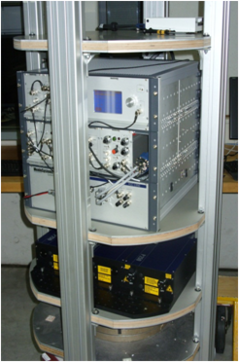
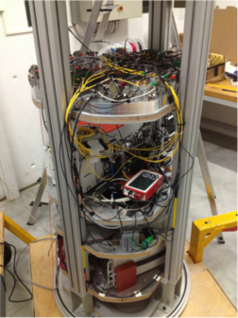
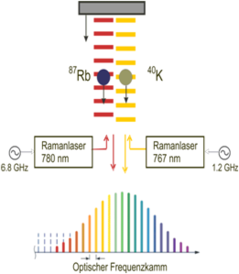
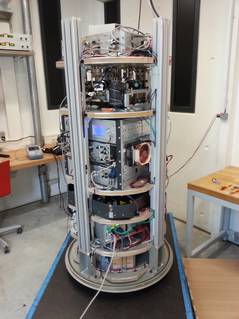
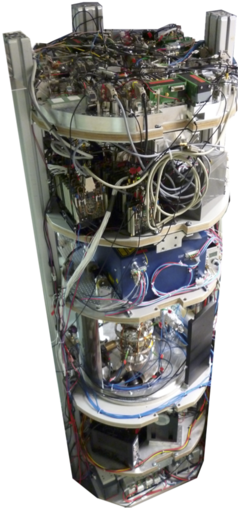
experiment campaigns
PRIMUS III
experiment year: 2020
number of drops: 22
experiment year: 2019
number of drops: 1
experiment year: 2018
number of drops: 27
experiment year: 2017
number of drops: 24
experiment year: 2016
number of drops: 18
PRIMUS II
experiment year: 2015
number of drops: 3
experiment year: 2013
number of drops: 4
PRIMUS I
experiment year: 2012
number of drops: 3
experiment year: 2011
number of drops: 20
experiment year: 2010
number of drops: 4


 "
"